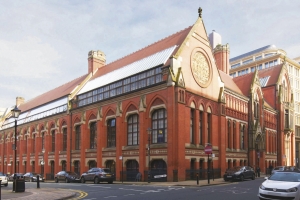
George Dawson and the Civic Gospellers
Birmingham was transformed between 1850 and 1900. Though in 1850 a fast-growing, prosperous manufacturing centre, it was an unplanned, insanitary muddle of a town; by the end of the nineteenth century however it was renowned both as ‘the best governed town in the country’ and as ‘the most artistic town in England.’ An environmental revolution enacted by Mayor Joseph Chamberlain in the early 1870s ensured Birmingham was ‘parked, paved, assized, marketed, gas and watered and improved.’ He and his supporters on the town council were inspired to act to improve the living conditions of Birmingham people by George Dawson, influential minister at the Church of the Saviour, who preached the mission of the ‘civic gospel’. But Dawson also taught that it was the duty of the wealthy, talented businessmen to civilise citizens, to educate, to promote intellectual opportunities, and to cultivate aesthetic appreciation.
This talk by Andrew Reekes is concerned with those Dawson disciples – men largely ignored in standard accounts of the civic gospel in Birmingham - who set about providing schools, adult learning opportunities, libraries, a unique Shakespeare Memorial Library, a museum and art gallery, as well as the foremost art and design schools in the land. More than in any other British city, this cultural and intellectual efflorescence was administered by the town council and its councillors; many of them were the same men who had campaigned for new educational and aesthetic initiatives and who generously gave to the cause. It is a story that deserves to be recorded.
Keywords: George Dawson, civic gospel, Andrew Reekes, Birmingham
Related Content

Birmingham's Civic Gospel
In Chamberlain, Civic Gospel,

George Dawson - The Lost Prophet
In Chamberlain, Birmingham, Civic Gospel, Ewan Fernie, George Dawson, Shakespeare,

